
 |
Climate Meetings with local people along the route
Sorry, I haven't had time yet to sort out the missing images, layout, and figure captions in this chapter
We arrived on the overnight trains and were met in Berlin by Bettina Kosub and Arno Paulus from Solarpolis, an organisation promoting the use of solar energy in the design of new buildings -particularly appropriate in this city which is still a vast building site. Here the group from London and Brussels joined up with Dietrich Brockhagen, Peter Hundley, Wolfgang Pomrehn, Berthold van Maris and Britta Coy. This was the first time that Britta and Ben had met after so many months of corresponding only by email. Our meeting was held in 'Democracy House'., a place which during Communist times was something of an ‘underground’ meeting place for various political and social groups. Arno had invited many local people and press along, although only a small number actually turned up. Nevertheless, we gave a presentation about our journey, and we spread out the sevetnteen large US airforce maps of our route bought in London before we left, which gave those present an idea of just how far we were about to travel. Most of the group were taken on a tour of the centre of Berlin, and informed about the rebuilding of the city and the problems it was causing such as pollution of the groundwater. Others spent time copying papers for the group, which included maps, schedules, basic information on climate science and the Convention process, acronyms and procedures. We had hoped to do all this before we left but there was never time. After a busy day we took the night train to Warsaw. The group arrived early in the morning and were met by Zuzanna Iskierka, who was to join our journey, Miroslav Sobolewski, a geographer who advises the government on climate issues, and Zbignieuw Karaczun who works with CAN Poland. They took us on a walk through the old part of the city, in the bright morning sunshine and we all had a hearty Polish breakfast, including many varieties of pancakes, soup and coffee. Zuzanna had also arranged a press conference which was held at the headquarters of the Polish Peasants Party. She had many local colleagues to meet us. Several presentations were given about the environmental problems in Warsaw, such as the rapid redevelopment which was swallowing up the few green spaces in the city centre. Ben and Britta also talked about the Climate Train and answered questions from the local people. We then went to visit a place nearby where local people were protecting trees in a community green area from "development". We posed for the local press and espressed our support for the campaign to save the trees, although the lack of time for translation meant that some of our group felt that our Climate Train event had been "hijacked" by this local issue. Meanwhile Christina Kopernik-Steckel and Peter Hundley dashed off to send a press release to Dani about the day’s activities. We were escorted back to the station by some of the local people and eventually boarded the train for Moscow in the late afternoon. Our press conference and discussion meeting in Moscow were organised by the Social Ecological Union, - a large Russian environmental NGO with headquarters in Moscow. Ilya Popov arranged the meeting, while Anna Kochineva, Viktoria Kolesnikova , and Olga Berlova from the SEU press service arranged the press conference, met us at various stations, and showed us around the city. Our group had now increased in size, since here we met Dan Swartz, Duskha Peric, Bianca Lotrean, Cristina Parau, Marina Shvangiradze and Ketevan Khundadze. We later met Alexander Kuzmenko and Irina Yevdokimova from Ukraine, but Igor Borodavko and our two Finnish participants were not able to join us until the following day. It was wonderful for everyone to meet at last! We spent tmost of our first day making plans and preparing presentations for the press conference the following day. We had discussed the idea of organising a media event in Red Square, but our Russian hosts strongly advised against this. However some of us still spent most of the night paiting and sewing a banner, designed by Christina Kopernik-Steckel, and lettered T-shirts. They were later useful for many media events along the way and in Kyoto. The next morning we held our well attended press conference on Kropotkinskaya, opposite the massive new St Saviour Cathedral. Britta Coy introduced the Climate Train project, Ben Matthews spoke about climate science, and Lydia Popova gave us some local news related to climate change and energy. We then went outside the building to pose for the cameras, and then walked back to Red square. In the afternoon we had a discussion meeting about many issues related to climate change, with representatives of local environmental NGO s, academics from Moscow university, and Green Party members. The people and groups who came were diverse: ‘Rainbow Keepers’ were a direct action group who showed us graphic pictures of a peaceful blockade of Rostov Nuclear Power Plant being violently broken up. In contrast, a green party member told us what it was like to try and work from within the system. We also exchanged ideas on what we should be campaigning for in Kyoto, with particular reference to problems that our Russian hosts were facing due to the difficulties being experienced because of economic problems in the country. In the evening we had the pleasure of entertaining some of the conference participants at our hotel. Our conference entitled ‘The Role of Siberia in Global Climate’ was organised by Amy Taylor of ISAR Siberia, with help from local scientists including Sergei Pashenko. ISAR's general mission is to promote mutual understanding between America and the former Soviet Union and recently the focus has been on environmental initiatives. The conference was funded by Charity Know How, which is a UK government fund with a similar purpose, with donations from many local organisations. Such a high-profile climate conference was an unprecedented event in Novosibirsk. It included deputies from the city and regional Governments, the chief forester, the head of the meteorological service, local environmental activists from the Siberian Ecological Foundation, and many researchers and students from the Akademgorodok (the largest concentration of universities and institutes in Russia). The chairpersons of the conference were: Valentin Nozdriukhin -Head of the Committee of the Environment at the Regional Administration and Maria Korotkevich - Director of Ecological Programs of the Inter-regional association "Siberian Accord". The conference was held in the Conference Room of the Regional Administration Centre, in central Novosibirsk. The area immediately outside the hall was enlivened and decorated by a number of displays on environmental topics, including school-children’s work. A number of local children also gave brief reports to the conference. Thus is included every sector of the local community, combined with the international delegates from our Climate Train. Such a diverse conference was necessarily fairly formal - a series of presentations with discussions between. Several Climate Train members gave presentations: This is a topic which Yuri Dublianski, who joined our train in Novosibirsk,was also particularly concerned about since as a geologist he knows that the Russian Government plans to bury lareg amounts of nuclear waster from its power stations in the permafrost of Siberia. Of course when climate change causes the permafrost to melt, this would cause potentially catastrophic consequences for the region. However Novosibirsk has also been home to nuclear research institutes- an academic came to tell us that the future lay in power from thorium instead of uranium - but most of us were not convinced. The Siberian participants gave a very interesting variety of presentation on issues such as: While we were talking inside the building, Sergei Pashenko had taken our cameraman Sco and the two reporters from Channel 4 News (see media chapter) to film the peat fires still smouldering in the nearby forests beneath the winter snow. The late summer and autumn had been exceptionally warm and dry in southern Siberia, and suddenly in October, just a few weeks before the Climate Train arrived, the peat in the ground itself caught fire all across the region, sending a great cloud of smoke drifting over Novosibirsk. Sergei and his team of researchers recorded a dramatic spike in their routine aerosol measurements and immediately sought out this NOAA satellite image which showed clearly where the fires were burning. In April, when Ben was returning through the grasslands between Harbin and Ulan Ude, orange lines of flame from burning peat could often be seen from the train at night, and in the day it seemed about one third of the ground was blackened. There was a common feeling of shared concern, expressed here by Konstantin Dunaev, It would hardly be reasonable to state that we can turn a blind eye to the problem even if its consequences are not catastrophic to our country. The problem is global and its consequences will affect, one way or another, the destinies of all people. Suffering of nations and communities due to climate change will adversely influence both social state and genetic fund of our planet. As most sensitive natural formations, ecosystems "feels" the consequences of climate change early. Through the disturbances of the relations between the components of these systems, the risk of the change of their state increases. Climate Train participants, and participants of the conference agreed a resolution to present at Kyoto, which drew together the subjects we had been discussing, and presented our concerns and demands for the Kyoto delegates. We displayed the resolution at our stall in the Convention Hall and the Russian version was printed in full in a newspaper (see media chapter). A book of some of the key papers presented at the conference is also being prepared by Yuri Chirokov (who is now running ISAR Siberia). Evening Activities We were accommodated in flats of local people, which gave us further insights into life in the region as Richard Scrase describes: Maggie, Wolfgang, Suzie and I were the guests of Anna Ovsyannikova and her little son, Dima in a house right on the edge of the city. Elena Konovalova showed us the way from the bus-stop up a snowy drive and then joined us to translate. In the course of our conversations that night and the next, we learnt a little of Annas previous life in the Altai. Her descriptions and pictures excited our curiosity to see this southern most part of Siberia. On the second evening Amy had arranged a party for us in the Akademgorodok, we shared some traditional food and of course vodka, and were treated to a recital of some Russian folk songs by local friends of Amy and Sergei. This also gave us an opportunity to chat informally with our Siberian colleagues, and to get to know the six Siberian people who would be joining us on the journey. On the third evening, before boarding the train to Irkutsk, participants of the Climate Train were taken to the splendid Novosibirsk Ballet Theatre, to completely escape climate change for a few hours!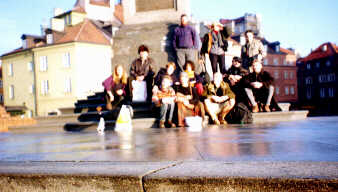

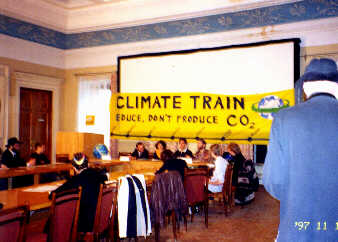
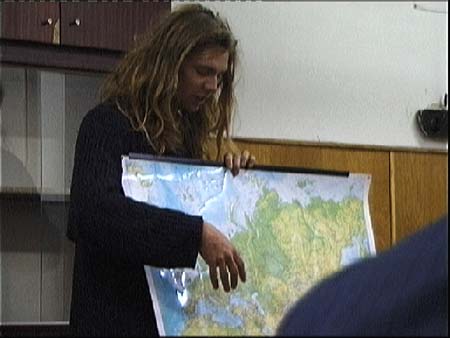
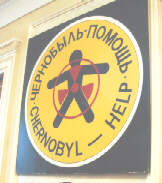

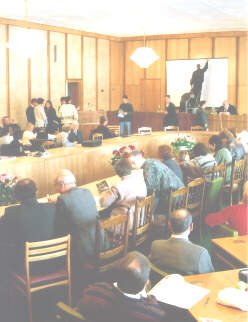
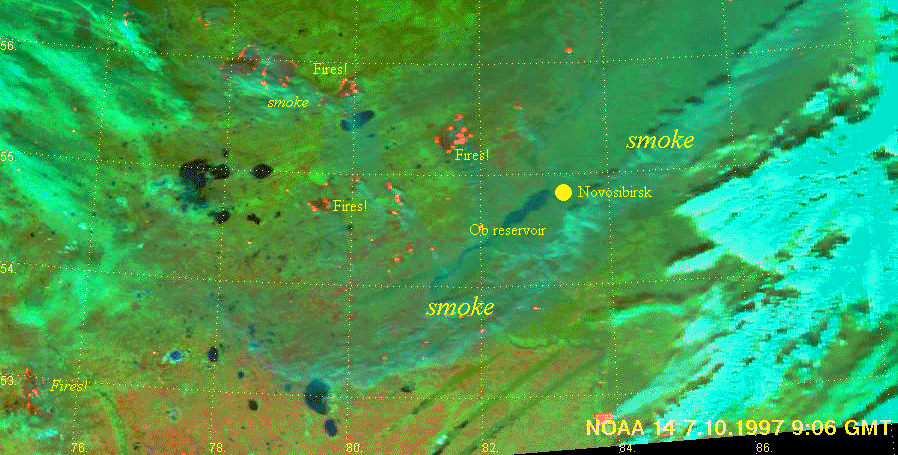

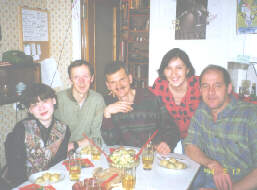

Conference in Agrometeorological Institute
Our scientific conference was held at the Agrometeorological Institute, Chinese Academy of Agricultural Sciences, and was organised by Professor Lin Erda (Director of the Institute) and Dr Li Yue. Although it was only a one-day conference we planned to cover many different topics. People introduced themselves and their organisations and then Lin Erda explained the work of the institute. Their principle concern is to predict the effect of climate change on agriculture, the most important factor in Northern China being rainfall patterns. However Lin Erda was also particularly interested in how changing agricultural practice can affect climate -through emissions of greenhouse gases such as methane, and nitrous oxide. He thinks this is a poorly understood "climate feedback process" which deserves much further research. In relation to this, one of his research students presented some recent work about methane emissions from cattle.
The institute had several departments, working on rural development, disaster reduction, global change in agriculture, and environmental engineering. They also led the committee responsible for advising the government on greenhouse gas emissions in the future. Lin Erda had many graphics illustrating China’s projected budget of greenhouse gas emissions, and spelling out exactly what practical measures would be taken to reduce them.
However we had to move on quickly as we had twelve people lined up to give presentations, including on the Chinese side Liu Chunzhen, Zhang XiuLi and Xu Yugao, and from the Climate Train the same line-up as at the Novosibirsk conference, with the addition of the Siberians of course. Sergei, Yuri and Kostya talked about the forest fires and smog formation, about the danger of melting permafrost for oil pipelines and nuclear waste disposal, and about the physiology of forests.
There were presentations on the implications of climate change for food security in China, farming zones and cropping systems and the role research could play in guiding changes in farming practice and other adaptive strategies. It was interesting to note that much of this was based on an equilibrium Global Climate Model prediction of future rainfall. However this model predicted that the area of northwest China, just across the border from Southern Siberia, should have much more rainfall due to greenhouse warming, yet as we had observed it had become extremely dry and the peat was burning. Equilibrium climate models do not adequately predict such extreme events, as discussed earlier.
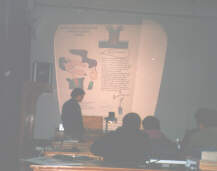
Coastal flooding in China due to rising sea-level was also discussed, but we learnt about this in more detail from Yu Jingjie at her presentation in the COP (see next chapter). We also learnt about the way technology was being applied to improve farmers living standards, to disaster control and to mitigation techniques to control climate change. The role of international co-operation in controlling climate change was frequently stressed, however the Chinese were cautious about commiting themselves to any legally binding targets in Kyoto.
In the evening we continued informal discussion of these issues during a banquet in the Agrometeorological Institute. However so many topics had been packed into one day that there was not time to discuss many details. To follow up some of the ideas generated by the conference Ben Matthews went back again to visit this institute in April, while passing through Beijing before setting out home on his return train journey. He also visited several other universities and institutes to discuss climate science, including the Energy Research Institute at Shahe 30km to the north-west of Beijing and, naturally, chose to get there by bicycle to see a little of the countryside. He recalled later:
"I got the impression that they were already very familiar with the figures and diagrams about climate science and policy which I showed them, and understood the scale of the problem much better than most people I had talked to in the Convention in Kyoto. There is no lack of experts in China concerned about the possible impacts of climate change, although the policy people said they needed to know more about the risks from positive feedback effects. The real problem now is an historical and cultural one, of convincing the ageing Chinese leadership that the call for a global limit on greenhouse gas emissions is not yet another plot for western domination of developing countries. It is a question of mistrust. Thus our Climate Train journey, and later my arrival on the bicycle (albeit two hours late because I had no map!) made a much greater impression than all of our technical arguments. It showed that at last here were a few people from the "west" who really meant what they said about us all changing our way of life to reduce CO2 emissions. The people I met in the Energy Research Institute said that they had been to several conferences in the USA, and were always shocked to see how fat people were, how they drove everywhere in big cars, even to the exercise gym. So it is not surprising that they don’t believe the rhetoric from western governments about reducing emissions. I pointed out that visitors to Beijing, particularly to the diplomatic quarter sandwiched between the fourth and fifth orbital motorways, might get the same impression. of modern China. But fortunately Beijing is not yet typical of the rest of the country, where everything - from sofas to girlfriends, is still carried on the backs of bicycles."
Meeting with Friends of Nature

On Sunday 23rd November, a group of us went to visit the offices of Friends of Nature in the old streets of central Beijing. They claim to be the only environmental Non Governmental Organisation in China, founded on World Environment Day, June 5, 1993, when a group of intellectuals met in Linglong park in the Beijing suburbs. Liang Congjie the Director told us about how the Chinese view environmental problems
"In recent decades the Chinese people were victims of many erroneous ideas and slogans, so that many people believed that with so-called modern science and technology mankind could go on exploiting nature ad infinitum. In the 1950s, a slogan by an academician of the former Soviet Union was prevalent in China: 'We should not wait for nature to give to us, we should plunder from nature!' Later we believed [the Maoist slogans] 'Man will conquer heaven [nature]', 'So long as there is mankind, any miracle can be performed,' and even "such ignorant and crazy sayings as 'High production depends only on man's boldness' and ‘When the oil workers roar the world trembles.' Only now are people beginning to realise that man's ability to control nature is limited".
He also told us about the work of the organisation. One particularly interesting project was the construction of a solar powered natural protection station in the Yangtse source area. These high mountains used to support many wild animals but now many are killed by migrant workers for their meat and fur. We asked about how he carries out his work given the particular political climate in China. He felt that given the political constraints his organisation had to operate within, one of the most useful roles that the they could take was organising environmental education projects, to teach the younger generation through information, activities and small scale projects to love their environment and want to protect it. To this end they have produced a very colorful and informative book for children about the natural world.
We also asked him about the "Three Gorges Project", which the Chinese government is presenting as a good alternative to fossil fuel burning for energy generation. However, the dam is likely to cause massive silting up of the Yellow river and displace many people from their homes. Liang Congjie felt that, yes it was environmentally unsound, but that he could not criticise it outright. He had to acknowledge that the dam was ‘constructed by very skilled Chinese engineers’ but that he could point out certain 'practical' or 'technical' problems which if the government deemed to be serious enough, could lead to the whole project being questioned. It was very interesting to discuss different ways of approaching environmental issues in China and Europe Some of those who had been working on environmental problems in countries of the former Communist bloc e.g. Dushka from Croatia and Yuri Chirokov from Siberia could sympathise with what Liang was saying. It was wonderful to meet these few people devoted to trying to raise awareness of these problems and promoting possible solutions .We were all given souvenir T-shirts and promised to keep in contact.
Meeting in Kobe Genki Village

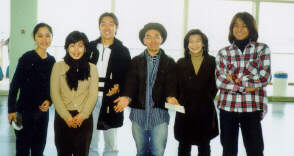
We spent our first night in Japan in the Genki village Community. Tatiana recalled:
In Kobe the lodging was provided by families living in temporary houses after their homes were demolished by the terrible earthquake three years ago. The memory of this catastrophe and thousands of victims is still vividly alive here. The city of Kobe is taking back its shape veyr quickly, but the areas of temporary houses have become an integrated part of its new appearance. This was our first night in Japan, and perhaps the only one, where we had the chance to feel the very special and ancient atmosphere of the Japanese house. Shoes left behind on the threshold, tatamis covered the floor, light sliding doors and smiling, considerate and always bowing hosts. Everything as in movies and books familiar from childhood. Japan is a very traditional world and sometimes you cannot comprehend, how the Japanese can be so advanced in the most modern technologies.
Since it was pouring with rain the welcome party had to be held inside one such house. Britta Coy, Ben Matthews, and Dietrich Brockhagen gave brief presentations about the Climate Train, we sang our "Climate Song" again, wearing our coloured garlands of origami swans which our Japanese friends had given to each one of us as soon as we arrived in the ferry terminal. We then started to devour the huge pots of rice and miso soup cooked by local students from Cool Action Kobe, with the help of ASEED Japan and many others. Outside was a barbecue under a canvas cover.
As we arrived on the ferry we were asked by many local reporters what we thought about the Kobe earthquake, and whether we thought the Japanese government should have done more by now to find new homes for the 40,000 people still living in temporary accomodation. As most of us did not know enough to answer this we resolved to learn more from the families we stayed with that night, and various booklets about the earthquake. Sco also returned to Kobe during the COP to make a video of interviews with people from Genki village.
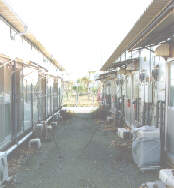
There is probably not a direct link between earthquakes and climate change (although there are some theories suggesting a pressure effect of changing sea-level) but there are many lessons we can learn from Kobe about the effect of natural disasters on human society, and we expect more and more disasters to be caused by climate change in the future.
 |